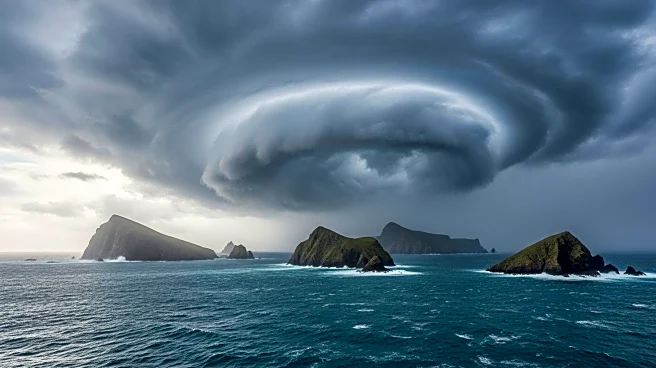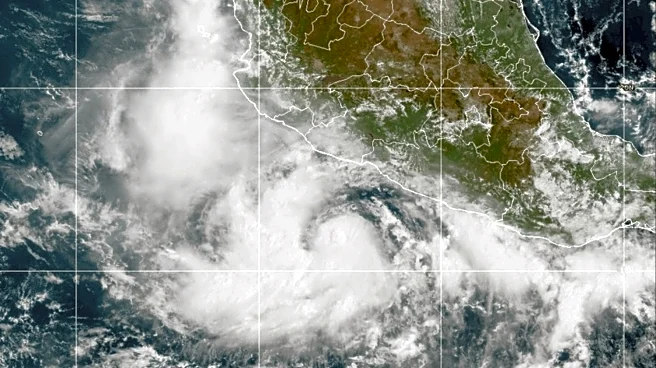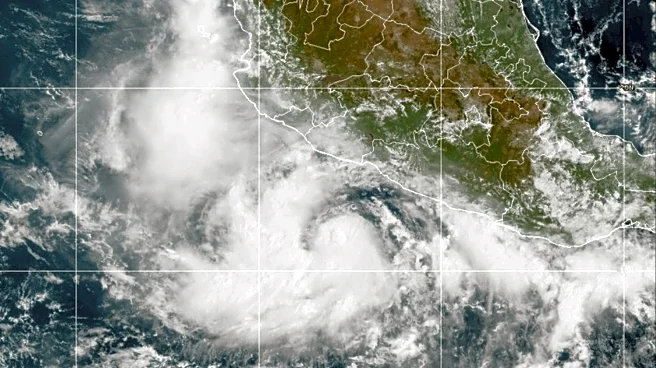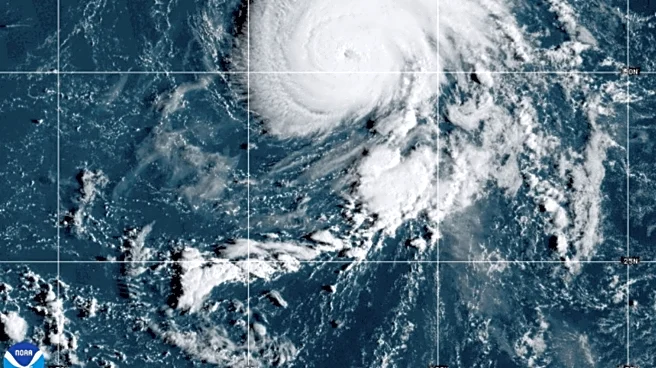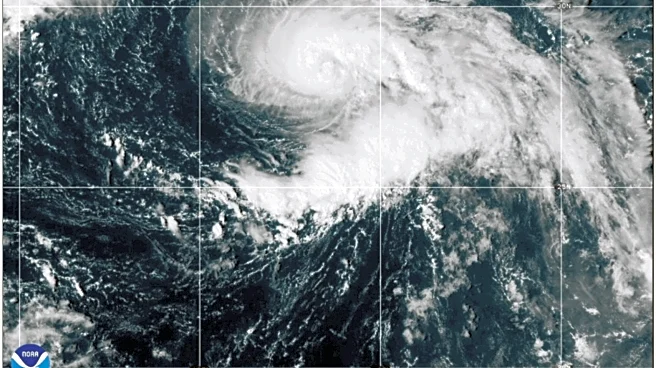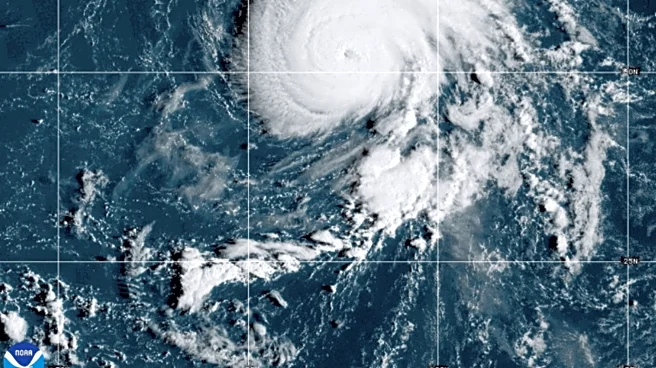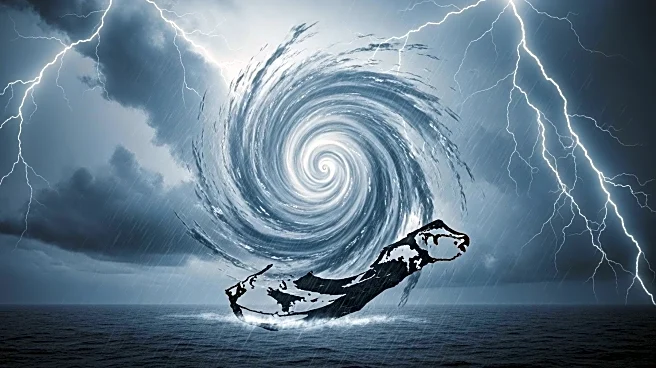What's Happening?
The Fujiwhara effect is a meteorological phenomenon that occurs when two nearby tropical cyclones or low-pressure systems begin to rotate around a common center. This interaction can lead to various outcomes, such as the storms orbiting each other, one storm absorbing the other, or the two merging into a single, more powerful system. Named after Japanese meteorologist Sakuhei Fujiwhara, who first described it in 1921, the effect is more common in the Pacific Ocean due to the abundance of tropical cyclones. In the Atlantic, it is rare for two low-pressure systems to be in close proximity. The Fujiwhara effect can significantly alter a storm's track and intensity, potentially leading to greater impacts on threatened areas.
Why It's Important?
Understanding the Fujiwhara effect is crucial for meteorologists and emergency management officials as it can dramatically change the trajectory and strength of hurricanes. This knowledge helps in predicting storm paths and preparing for potential impacts, which is vital for minimizing damage and ensuring public safety. The effect can lead to unexpected changes in storm behavior, requiring adjustments in forecasting models and emergency response plans. As climate change influences weather patterns, the occurrence of such phenomena may become more frequent, necessitating improved predictive capabilities.
What's Next?
Meteorologists will continue to monitor the conditions that could lead to the Fujiwhara effect, especially during active hurricane seasons. Advances in satellite technology and atmospheric modeling may enhance the ability to predict such interactions, providing more accurate forecasts. Emergency management agencies may use this information to refine evacuation plans and resource allocation strategies. Public awareness campaigns could be implemented to educate communities about the potential impacts of the Fujiwhara effect and the importance of preparedness.

